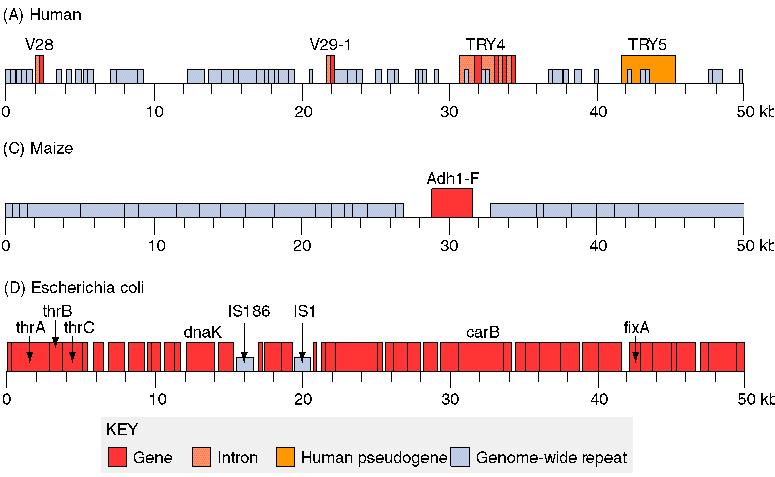Biology Dept Kenyon College |
|
 |
Biology Dept Kenyon College |
|
 |
The character of all
living organisms result from the interaction of environment
and
genes.
For example, the risk of colon cancer is increased by dietary factors such
as high fat and low fiber. But a certain genetic allele
(version of a gene sequence) in certain individuals confers a high risk
of colon cancer, even with a low-risk diet.
Experiments designed to demonstrate the genetic or environmental component of a trait generally aim to keep all components constant except the one tested. As a result, someone who studies Down's Syndrome might conclude that the basis of intelligence is genetics; whereas someone studying lead poisoning would conclude that the basis of intelligence is environmental. Actually, all traits -- appearance, development, behavior -- depend on BOTH genes and environment. Chance also determines the development of an organism. For example individuals with the chromosome abnormality of Down's Syndrome may develop by chance to a wide range of levels -- some develop so badly they die before birth; others have severe heart defects and other physical problems; mental delays vary from severe to minor; some show few physical problems, and can attend college. None of this variation can be predicted from the genes, only from chance effects in development. Levels of organization in living systemsThe content of the Biology core courses can be viewed as a continuum:
Molecule - Cell - Organism
- Population - Ecosystem - Biosphere
|
||||||||||||||||||||||||||||||||||||||||||||
| Genomes
A genome is the total of all genetic sequence in an organism. See The Human Genome Project. The genome of Escherichia coli contains 4.6 million base pairs, encoding 4,400 genes. The human genome contains 3 billion base pairs in the nucleus, but only 60,000 genes (estimated), taking up 3% of the sequence. The rest includes regulator regions and large stretches of repetitive sequence of unknown function. The entire genome has been sequenced for several microbes, and for several animals and plants: Human (Homo sapiens)Take a closer look at three genomes: |

What might the chimps have to say about it? |